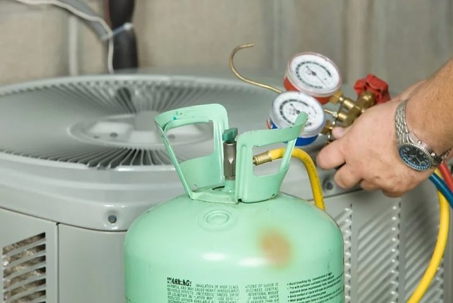R-410A Refrigerant Phase-Out: What It Means for Your HVAC System and Your Home
If you own a home with an HVAC system that uses R-410A refrigerant, it’s time to start thinking ahead.
The HVAC industry is in the middle of a major transition: R-410A, once the standard for residential systems, is being phased out due to its high Global Warming Potential (GWP). In response to environmental concerns, the EPA has mandated a gradual reduction in its production, with new systems using R-410A no longer allowed starting in 2025.
So what does this mean for you? Whether you're planning to hold onto your current system or exploring new options, here's what you need to know.
Can I Still Use My R-410A System?
Yes, you can. Existing systems that use R-410A can still be serviced and maintained. But here's the catch: as production slows down, the cost and availability of R-410A are expected to change.
What to Expect:
R-410A will still be available for years to come—likely into the 2040s—but prices may increase.
Regular maintenance is more important than ever to extend your system’s life and avoid expensive refrigerant recharges.
If your system is leaking, have it checked right away. Leaks not only hurt performance—they can be costly in the long run.
Don’t try to retrofit with R-32. R-32 is not a drop-in replacement. It has different pressure and flammability properties, and using it in an R-410A system is both unsafe and against manufacturer guidelines.
Thinking About Replacing Your System?
If your system is aging or you’re facing frequent repairs, now is a great time to consider an upgrade—especially with more energy-efficient and eco-friendly options available.
Meet the New Refrigerants:
R-32: A lower-GWP refrigerant that offers excellent efficiency and is easier to recycle. It's already being used in many new residential systems.
R-454B: Another promising alternative, R-454B has similar performance to R-410A but with significantly less environmental impact.
What About Costs?
New systems using R-32 or R-454B may have higher upfront costs, but they typically offer better energy efficiency, lower maintenance, and long-term savings.
R-32 is also generally cheaper per kilogram than R-410A, helping reduce refrigerant-related service costs over time.
Key Dates and What to Do Next
Starting in 2025, manufacturers will no longer be allowed to produce new systems that use R-410A.
Your existing system can still be used and serviced, but refrigerant will become less available (and likely more expensive).
Now’s the time to start planning if your system is more than 10 years old or needs frequent repairs.
Final Thoughts: Plan Ahead, Stay Comfortable
This transition doesn’t mean you need to rush out and replace your system today—but it does mean you should start thinking strategically.
If your current system is working fine, stay on top of maintenance and keep an eye on performance. But if it’s aging, inefficient, or costly to maintain, upgrading to a system that uses R-32 or R-454B might be a smart move—for both your wallet and the environment.
Have questions or ready to explore your options?
Reach out to a certified HVAC professional to assess your current setup and get personalized recommendations. Planning ahead now can help you avoid headaches—and big bills—later.

